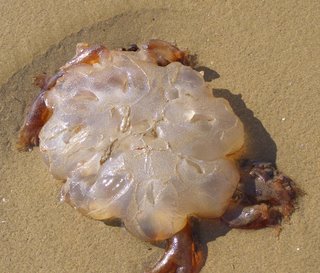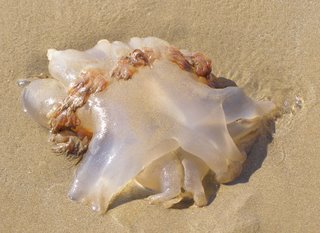ZEN AND THE ART OF JELLYFISH MATAINENCE
 The Daijo-ji Temple was built in 1261 and sits at the foot of Mt. Daizyoji in the Noda Range. The area is gorgeous and surrounded by tall red pine trees and has a general feeling of calm and serenity. The temple is important in the Japanese culture because it is one of the original places where zazen was born over 800 years ago. Zazen, translated means “just sitting.” The monks practice asceticism in the temple, which means a life away from worldly pleasures. They believe this lifestyle can make them think more lucidly and help them avoid potentially damaging short-term impulses. Wouldn’t that be lovely if we all avoided those more?
The Daijo-ji Temple was built in 1261 and sits at the foot of Mt. Daizyoji in the Noda Range. The area is gorgeous and surrounded by tall red pine trees and has a general feeling of calm and serenity. The temple is important in the Japanese culture because it is one of the original places where zazen was born over 800 years ago. Zazen, translated means “just sitting.” The monks practice asceticism in the temple, which means a life away from worldly pleasures. They believe this lifestyle can make them think more lucidly and help them avoid potentially damaging short-term impulses. Wouldn’t that be lovely if we all avoided those more?
All around the temple were Jizo statues. Most of them had red aprons tied around them. I found out, Jizo means “earth womb” or “water baby.” They watch over unborn children: aborted, miscarriage, stillborn. If children die early, they are taken back to the realm of gods. This can often be confusing to them so the Jizo shelter them and watch over them. They are the guardians of the souls of unborn or dead children. Every one of them is a testament of loss and grief. While it’s hard to look and know that all of these aprons represent someone’s malaise, it’s also a comfort because hopefully it is bringing some grieving family peace.


Colleen, Neil, and their friend, Rick and I walked through the grounds. I rang the temple bell and said a quick prayer.
On the grounds was also one of Buddha’s footprints. This shows his perfection and defines the sacredness of the place.

Afterward, we walked though the cemetery; many of the old tombstones had fresh flowers on them. Colleen told me that the tombstones don’t have the deceased’s real name on it. At the time of death, individuals are given dharma names (kainyo), which symbolizes the deceased’s final entry into the pure land. This makes it difficult to trace families. The beauty of this tradition, to me, is that it’s not about the family. It’s geared around helping that person reach the afterlife. Could you sacrifice your family name, the name of someone you loved? I feel in the Christian ceremony a lot of the ritual is to not only put someone “at peace” but to give the ones left behind peace. Aren’t the tombstones and grave markers really for the family? Could some people feel just as good visiting a marker with a different name on it if it guaranteed the person’s entrance into “heaven.” Or would they more likely put their needs above others, even in death. It reminds me so often of witnessing people who died where the family comes in (sometimes estranged) and often makes arrangements for the individual’s death based on what they want, not on the life the person lived. I have always been a little touchy about death and I feel it is equally important to respect people in life as it is in death. It’s still their energy, just in a different form.
The dharma names are just one of the few things I have found fascinating about this culture.


Chirihama Beach is on the Japan Sea in Ishikawa and is famous for supposedly being the longest beach you can drive a car on. My friend Colleen suggested we stop at the beach on the way to the Keta-taisha temple for a burning of the “negatives.” This is a personal ritual she has done with many of her friends when they are going through a transition in their life. They write down the things that are negative in their life and burn them on the beach. It reminded me of the last two years of Vinotok in Crested Butte, Colorado…..
Fade to Back-story.
Vinotok is a pagan festival that celebrates the autumnal equinox. There is a pregnant Harvest Mother, maidens, torch bearers, an Earth Dragon and the ever-popular Green Man, who represents lusty fertility and whose main job is to walk around town drinking and kissing maidens. There are many more activities such as Liar’s Night and Harvest Festival, but the sum up revolves mainly around the Grump Trial. The Grump is an effigy of the ancient Slovenian traditions that has been morphed into a… well, Grump – a giant sculpture stuffed with people’s complaints. Weeks before, children of Crested Butte make “grump boxes” and place them around town. People write down their complaints (i.e. things they want to release) and things they want to invite into their life. During Vinotok, after the Grump Trial on the main street (where the grump is always found guilty) he’s is wheeled to the center of town while hundreds of people follow and chant, “Burn the grump! Burn the grump!” The grump is then set on fire (you can also toss your grumps in then) and maidens dance around him. Nice, right?


My first time, I wasn’t informed of the actual specifics of the festival. I was just told to bring a costume. Imagine my surprise to be parading down the streets in my black corset, red tutu, big red fluffy coat and platform boots surrounded by women in long flowing burlap dresses, sandals and flowers in their hair. But, there is something to be said about the hospitability of Crested Butte. When I walked into a bar after the grump burning, all of the maidens stood up and cheered, asking to kiss my breasts. It took quite some time to scrub all of the lipstick off the next day.
My second time, was curtsey of Hurricane Katrina, since we ended up in Crested Butte after the storm. Oh, did I mention there is a lot of drinking involved in Vinotok? My friend Chloe and I were dancing around the burning Grump, when it suddenly expanded to three times its size. A giant ember flew off and landed on her dress. In my somewhat inebriated state, I tried to warn her. “You know,” I said, “you have one of those things on you.” Chloe asked me what. “You know, one of those… umm… what are those things called? They, um… You know they, uh…” Chloe kept trying to coach the word out of me all the while her dress started to smolder. “It’s when, umm… those things that… um….” Chloe stood patiently, throwing out possible suggestions of words I was trying to describe. “It’s when... the thing from the fire that….” Once her dress caught fire, it didn’t take long for Chloe to figure out the word I was trying so hard to explain.
But I digress…..
On the drive to Chirihama, I worked on my list – two pages! When we got there, the first thing I noticed was that the sand was a lot like Jefferson Beach where I grew up: light in color and firm -good for digging up gooey ducks. I wandered around looking at the fishing boats on shore and then became momentarily distracted by the dead jellyfish. They looked like something. Clouds, Rorschach Inkblots? What where they trying to tell me? You decide. What do you see in the jellyfish? I hesitate to confess what I see.









Later, we dug a hole and I placed my “grumps” in the sand and we slowly set them on fire. Since none of us smoke, we were prisoner to the car lighter and Neil had to make numerous trips. But as Colleen noted, “It always takes a long time to accumulate and takes just as long to get rid of them.” Which was a good thing everything was released because we were off to Keita; The Love Shrine.

To be continued…


0 Comments:
Post a Comment